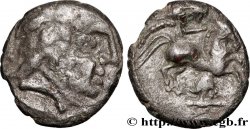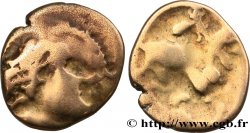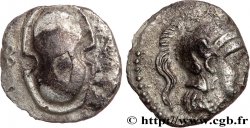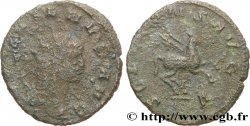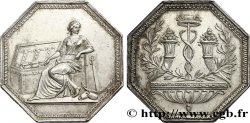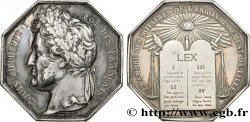v15_0758 - GALLIA - NAMNETES (Regione di Nantes) Quart de statère à l'hippophore
MONNAIES 15 (2002)
Prezzo di inizio : 110.00 €
Valutazione : 220.00 €
lotto invenduto
Prezzo di inizio : 110.00 €
Valutazione : 220.00 €
lotto invenduto
Tipo : Quart de statère à l'hippophore
Data: c. 60-50 AC.
Nome della officina / città: Nantes (44)
Metallo : elettro
Diametro : 15 mm
Asse di coniazione : 3 h.
Peso : 1,69 g.
Grado di rarità : R1
Commenti sullo stato di conservazione:
Flan très large échancré à 2 heures. Monnaie écrasée afin de la démonétiser
N° nelle opere di riferimento :
Diritto
Titolatura diritto : ANÉPIGRAPHE.
Descrittivo diritto : Tête large et massive à droite, entourée de cordons perlés.
Rovescio
Titolatura rovescio : ANÉPIGRAPHE.
Descrittivo rovescio : Cheval androcéphale galopant à droite conduit par un aurige étendant la main droite ; entre les pattes du cheval, hippophore.
Commento
Ce type ne semble pas avoir été isolé par S. Scheers en 1982 et constituerait une variante de la classe 2. Le type est néanmoins très proche des exemplaires en billon alors que celui-ci, encore jaunâtre, contient encore une quantité non négligeable d’or. L’appellation à l’hippophore vient du personnage qui est placé sous le cheval au revers (mot à mot celui qui porte le cheval où hippos se traduit par cheval et phoros par qui porte, en grec).
This type does not seem to have been isolated by S. Scheers in 1982 and would constitute a variant of class 2. The type is nevertheless very close to the billon examples while this one, still yellowish, still contains a significant quantity of gold. The name with the hippophora comes from the character who is placed under the horse on the reverse (literally the one who carries the horse where hippos translates as horse and phoros as who carries, in Greek)
This type does not seem to have been isolated by S. Scheers in 1982 and would constitute a variant of class 2. The type is nevertheless very close to the billon examples while this one, still yellowish, still contains a significant quantity of gold. The name with the hippophora comes from the character who is placed under the horse on the reverse (literally the one who carries the horse where hippos translates as horse and phoros as who carries, in Greek)







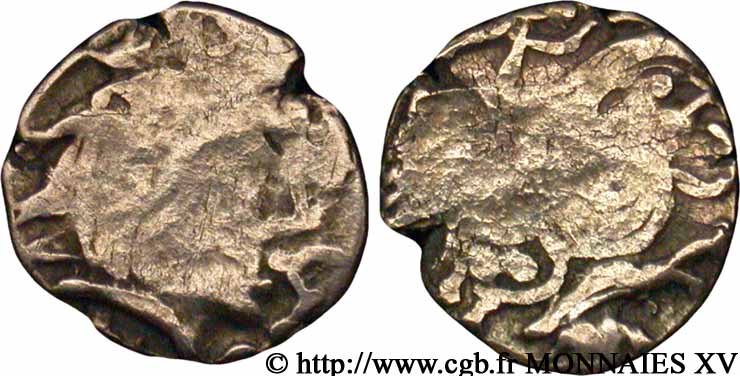
 Segnalare un errore
Segnalare un errore Stampate la pagina
Stampate la pagina Condividi mia selezione
Condividi mia selezione Fai una domanda
Fai una domanda Consegnare / vendere
Consegnare / vendere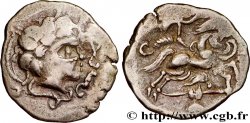
 Descrittivo
Descrittivo
